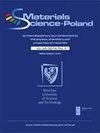Hydration, Microstructure, and Properties of Fly Ash–Based Geopolymer: A Review
IF 1.3
4区 材料科学
Q4 MATERIALS SCIENCE, MULTIDISCIPLINARY
引用次数: 0
Abstract
Abstract Geopolymers have gained attention as a potential eco-friendly alternative to Portland cement, primarily due to their reduced carbon dioxide emissions and the opportunity to repurpose industrial waste materials. Fly ash (FA), a byproduct of coal combustion, has been favored as a raw material for geopolymer concrete owing to its widespread availability and high concentrations of alumina and silica. The development and application of fly ash–based geopolymer concrete can contribute significantly to production of sustainable construction materials. An in-depth analysis of fly ash–based geopolymer concrete has been conducted to explore its potential as a substitute for traditional concrete. This review encompasses the underlying reaction mechanism, strength, long-term durability, and microstructural characteristics of geopolymer concrete. The present review paper shows that adding the optimal quantity of fly ash improves the performance of fly ash–based geopolymer when exposed to extreme durability conditions, as well as improving strength properties. The microstructural analysis shows that when fly ash is added, the microstructure of the concrete matrix would be dense and packed. However, challenges remain in adopting fly ash–based geopolymer concrete for large-scale construction projects, as the existing literature presents inconsistencies in the reported strength, durability, and test results. Further research is necessary to consolidate knowledge on the behavior and mechanism of fly ash–based geopolymer concrete and to ultimately provide comprehensive data to support its widespread implementation in the construction industry.粉煤灰基地聚合物的水化、微观结构和性能研究进展
地聚合物作为波特兰水泥的潜在环保替代品而受到关注,主要是因为它们减少了二氧化碳排放,并有机会重新利用工业废料。粉煤灰(FA)是煤燃烧的副产品,由于其广泛的可用性和高浓度的氧化铝和二氧化硅而被青睐作为地聚合物混凝土的原料。粉煤灰基地聚合物混凝土的开发和应用对可持续建筑材料的生产具有重要意义。对粉煤灰基地聚合物混凝土进行了深入分析,以探索其作为传统混凝土替代品的潜力。本文综述了地聚合物混凝土的潜在反应机制、强度、长期耐久性和微观结构特征。研究表明,掺加适量的粉煤灰可以改善粉煤灰基地聚合物在极端耐久条件下的性能,并提高其强度性能。细观结构分析表明,掺加粉煤灰后,混凝土基体细观结构致密、堆积;然而,在大规模建设项目中采用粉煤灰基地聚合物混凝土仍然存在挑战,因为现有文献在报道的强度、耐久性和测试结果中存在不一致。进一步的研究是必要的,以巩固对粉煤灰基地聚合物混凝土的行为和机理的认识,并最终提供全面的数据,以支持其在建筑行业的广泛应用。
本文章由计算机程序翻译,如有差异,请以英文原文为准。
求助全文
约1分钟内获得全文
求助全文
来源期刊

Materials Science-Poland
MATERIALS SCIENCE, MULTIDISCIPLINARY-
自引率
18.20%
发文量
18
期刊介绍:
Material Sciences-Poland is an interdisciplinary journal devoted to experimental research into results on the relationships between structure, processing, properties, technology, and uses of materials. Original research articles and review can be only submitted.
 求助内容:
求助内容: 应助结果提醒方式:
应助结果提醒方式:


